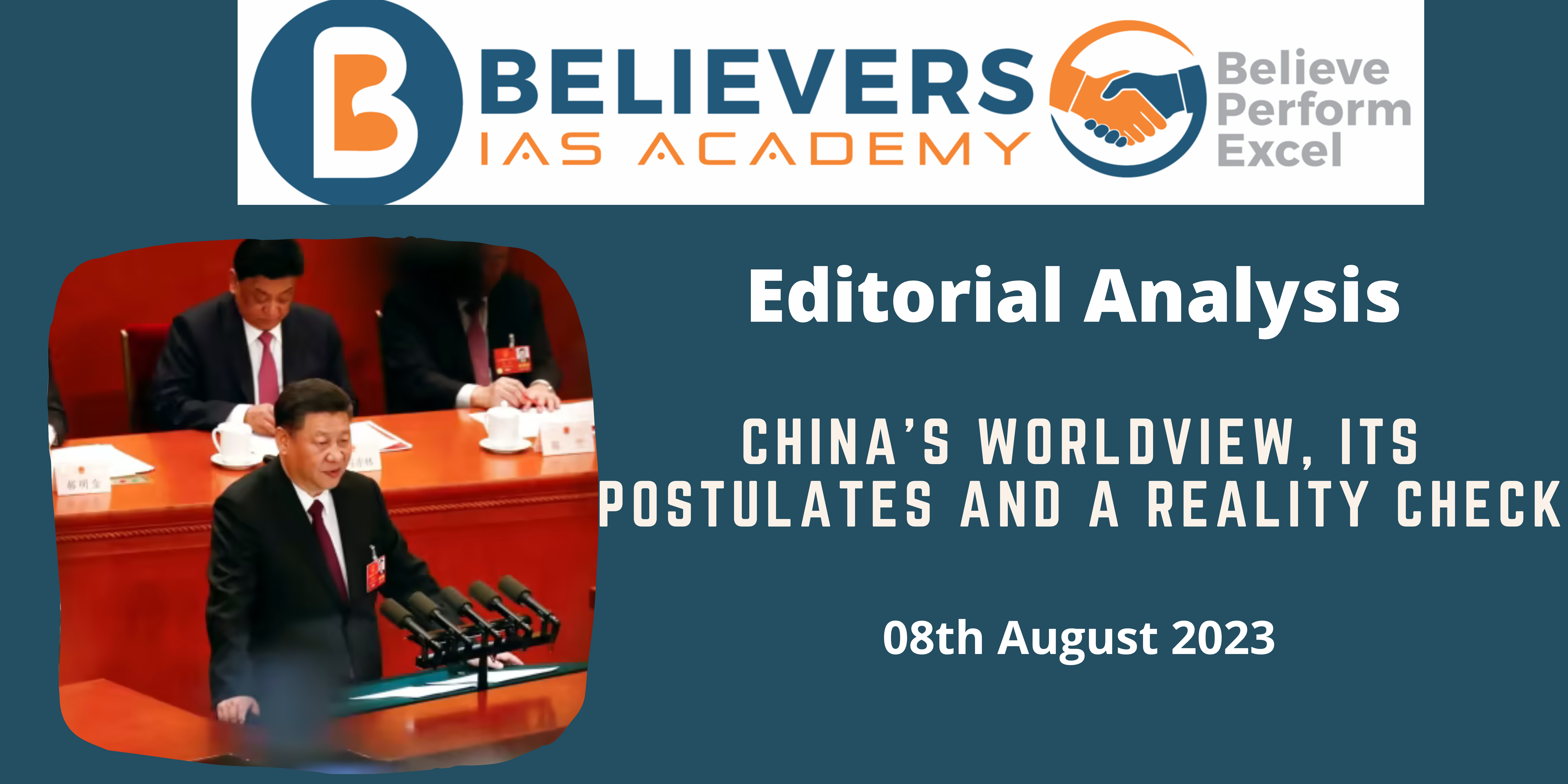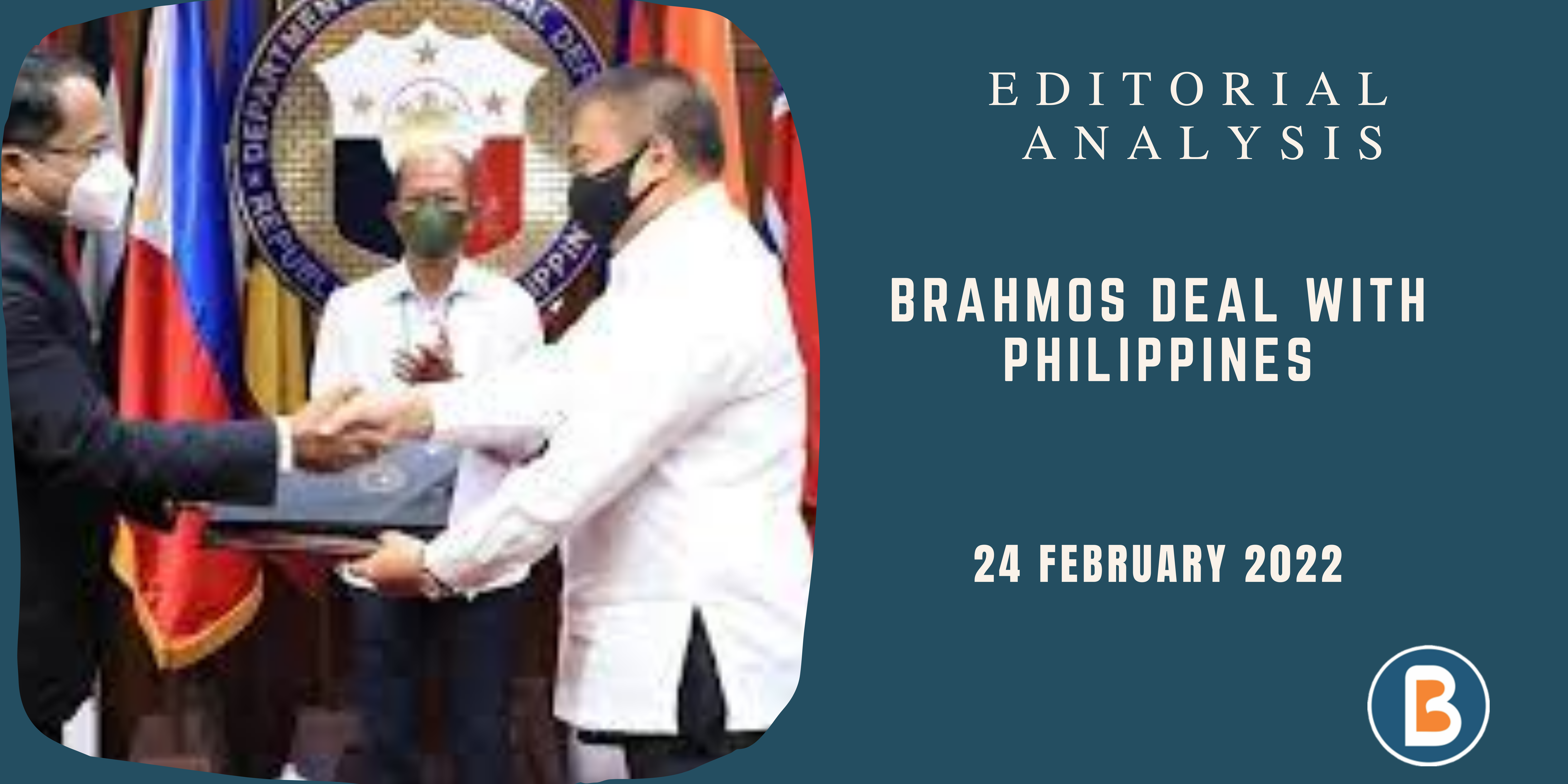China’s worldview, its postulates and a reality check
Context:
The shifting tides of global dynamics and the prevailing winds of change have thrust the enigmatic leader, Xi Jinping, and his orchestration of ‘changes unseen in a Century’ into the limelight. Within this discourse lies the assertion that the once unassailable ‘rules based order’ championed by the West is destined to crumble, yielding ground to an ascendant Chinese-propagated global paradigm. Implicitly, it suggests that a world marred by discord, inequality, and fragmentation is tailor-made for a Chinese-dominated dominion.
Relevance:
GS-02 (International relations)
Mains Questions:
Analyze the factors contributing to the perceived shift in U.S.-China dynamics, considering the evolving geopolitical landscape and its impact on global alliances and security arrangements. (150 Words)
Dimensions of the Article:
- Navigating ‘Xi Jinping Thought’ and the New Order
- U.S. as the Protagonist of Threat
- Polycentric Competition and Cooperation: The Chinese Perspective
- China’s engagement with Contemporary Challenges
- Deciphering China’s quest
- Can China Dethrone the ‘Rule Based Order’?
- China’s Remedial Endeavors
- The problem of Taiwan
Navigating ‘Xi Jinping Thought’ and the New Order
- The premise of ‘Xi Jinping Thought’ hinges on the idea that the battle for supremacy is a multifaceted terrain transcending military might.
- Emerging as an indomitable force, China’s trajectory is inextricably linked to its technological prowess, cultural influence, and demographic heft.
- Thus, the narrative surges forth, heralding the inevitable triumph of China’s ascendancy, catalyzed by its technological upsurge and bolstered by economic resilience.
U.S. as the Protagonist of Threat
- Among the myriad colors that shape China’s world view, one undeniable fact is that the United States is a formidable adversary.
- The intricacies of polarized American society, coupled with the erosion of global clout, act as a favorable ground that drives tensions between the U.S. and China.
- The global geopolitics witnesses new formations, epitomized by AUKUS and the Quad, emanating from this schism. As the specter of a more assertive U.S. stance on Taiwan looms, China’s countermove involves a robust expansion of its Global Security Initiative (GDI) and the Shanghai Cooperation Organisation (SCO).
Polycentric Competition and Cooperation: The Chinese Perspective
- Perceiving the contemporary global stage through a Chinese prism, scholars enunciate the era of ‘Polycentric Competition and Cooperation.’
- China argues that this transformation caught the U.S. unawares, manifesting palpably in regions like West Asia. Here, China’s rise usurps U.S. dominance, exemplified by its role in fostering the Iran-Saudi Arabia truce.
- Concurrently, China’s influence threads through the international organizations, such as the World Health Organization. Its stratagem of embedding nations within the ambit of Chinese norms and standards imparts further supremacy.
- As China’s voice resonates across international standards setting bodies. These standards burgeon, shaping the course for nations, while consequently, China’s economic interests and state-subsidized capital never compromises.
China’s engagement with Contemporary Challenges
- The COVID-19 pandemic casts a shadow over China’s economic canvas, resulting in a tumultuous landscape of economic distress and societal upheaval.
- The aftermath of the pandemic reveals the scars of economic policies that have experienced reversals. This upheaval stems partly from Xi’s inclination towards orthodox Communist principles, which clashes with the buoyancy of market-oriented strategies.
- The tussle between governmental control and the private sector introduces an element of uncertainty into China’s economic framework.
- The economic tumult has prompted multinational corporations to flee, their confidence shaken by China’s shifting economic trajectory.
Deciphering China’s quest:
- A lot of perplexity unfolds, requiring China to recalibrate its intentions amidst the currents of Polycentric Competition and Cooperation.
- Forging a path to overtake its rivals demands risk taking moves and policy revamps.
- China faces an uphill battle. Anemic GDP growth, languishing around 3%, demands for robust vitality.
- The cases of unemployment looms, as youths grapple with desolate job prospects. The aging population compounds these problems, inviting a dark demographic portrait.
- To overcome this, China must enhance a new economic model. Gazing at the West’s unrestricted markets, China seeks to create an alternate theory of modernity, fostering innovation and liberation from state-driven shackles.
Can China Dethrone the ‘Rule Based Order’?
- The main point revolves around whether China can overthrow the West’s ‘rule-based international order,’ discarding it to establish a new order that aligns with worldwide fragmentation.
- A crucial aspect depends on the accuracy of China’s assertion about a crumbling West. The situation in Ukraine demonstrates that a divided West can unite under U.S. leadership, outmaneuvering Russia to showcase a ‘free will’ that outshines ‘controlled systems.
China’s Remedial Endeavors:
- Propelled by China’s redemptive narrative, the Governor of the People’s Bank of China assumes an economist’s role that enhances the banking sector’s reputation which instills confidence worldwide.
- The newly appointed Chinese Premier, Li Qiang, initiates endeavors to revive the private sector, suggesting a potential shift.
- The progression towards a multi-faceted economy, harmonizing with global trade, remains a mysterious path destined to be recorded in history.
The problem of Taiwan:
- Despite increasing tensions, a catastrophic conflict resembling the events in Ukraine appears unlikely.
- The far-reaching consequences of such a clash would severely impact economies worldwide. However, both China and the U.S. find it challenging to detach from Taiwan’s significant influence.
- An alternative approach could involve a subtle adjustment of objectives, where Taiwan is repositioned as a symbolic element within a larger array of conflicts.
Conclusion:
Xi Jinping’s journey into unexplored territory, marked by challenges, signals an imminent seismic change. The global landscape undergoes a metamorphosis through China’s undertakings, and as the eyes of the world remain fixed, the interplay of discord and harmony creates a tableau that surpasses easy understanding.





